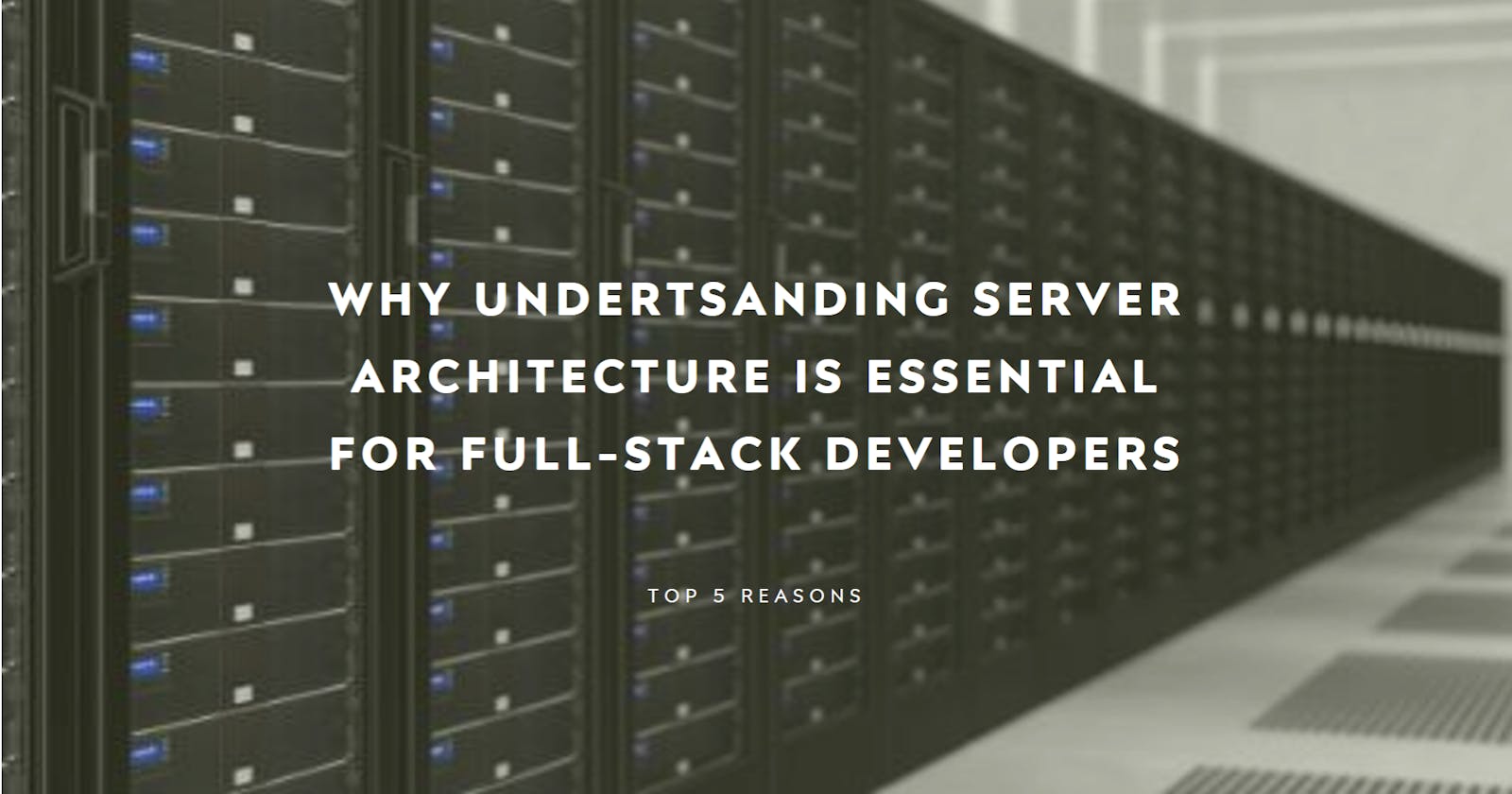Top five reasons why understanding Server Architecture is essential to the Full-Stack Developer
This is the fourth of a series of posts highlighting each of the 18 Monthly Topics discussed in the Kekoexchange community: the continual learning platform for full-stack developers. If you want to learn more, please check us out at Kekoexchange.com.
Server architecture in full-stack development refers to the comprehensive understanding of the hardware and software aspects of application servers. It involves knowing how the server operates, manages requests and resources, and interacts with different parts of a web application. This understanding is crucial for optimizing web application performance, scalability, and security.
Servers are computer programs that utilize physical computers that work together to host your application. Understanding the main components is critical for full-stack engineers to know how their applications function. Here are some of the main components that are important to know:
Main Parts of a Server
CPU (Central Processing Unit) - This is like the head chef in a kitchen. The CPU manages and does all the main tasks of a computer server.
GPU (Graphics Processing Unit) - Imagine this as a group of chefs who are experts in specific dishes. The GPU does tasks that the CPU can't do as efficiently, like creating graphics or analyzing lots of data.
RAM (Random Access Memory) - This is like the kitchen counter where chefs put ingredients they use a lot. RAM holds the data and programs that the server is currently using.
Disk Space - Think of this as the pantry and fridge in the kitchen, storing all the ingredients (data and software). It keeps the data for a long time.
Different Ways to Run Servers
Bare Metal Servers - These are like having an entire restaurant kitchen for one chef. They are robust and secure, used for big, important tasks.
Virtual Machines (VMs) - This is like having multiple small kitchens inside one big kitchen. They let you run several servers on one physical machine.
Containers - Imagine these as pre-packed meal kits. They have everything needed to make a meal and can be used in any kitchen. Containers let you run servers in a very organized way.
Serverless Functions - These are like ordering food from a caterer. You don't worry about cooking; you get the finished product. Serverless functions let developers run small tasks without managing the whole server.
Now that we've discussed some of the items of understanding the internals of server architecture let's get into the top five reasons why understanding server architecture is essential to full-stack developers:
Top Five Reasons for Understanding Server Architecture for full-stack developers:
#5: Security Enhancement
With a comprehensive understanding of server architecture, developers can implement more robust security measures, protecting the application from potential threats and vulnerabilities.
#4:Cost-Effectiveness and Efficiency
Understanding server architecture can lead to more cost-effective and efficient development processes, as developers can foresee potential issues and design more streamlined, practical solutions.
#3: Enhanced Problem-Solving and Debugging
Understanding server architecture allows full-stack developers to better identify and resolve issues that arise at the server level, leading to more efficient problem-solving and system optimization.
#2: Versatility in Development Projects
Full-stack developers with server architecture knowledge are more versatile and can handle a broader range of tasks, from front-end to backend development, making them invaluable in project teams.
#1: Improved Performance and Scalability
Knowledge of server architecture is crucial for optimizing the performance of applications and making them scalable. Developers can make informed decisions about data modeling, resource allocation, and server configurations.
In conclusion, a deep understanding of server architecture equips full-stack developers with the skills to build, maintain, and optimize complex web applications effectively. This knowledge is not just a technical requirement but a strategic asset that significantly enhances their ability to contribute to any project.
Would you like to learn more about web technologies with fellow full-stack developers? If so, I invite you to check out kekoexchange.com and join us!

